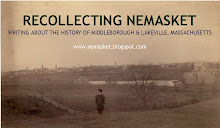..
Like other local schools, the Green was heated by means of a wood stove which likely stood in the center of the room and had a pipe traversing the ceiling to the rear chimney. To fuel the stove, the town paid various dealers to provide wood. During the school’s first year of operation, Arad Bryant was paid $7.50 to supply it with wood, and an additional $1.75 was spent for sawing. In 1872-73, $18.50 was paid to A. H. Soule and R. Gammons for wood for the Green School. Contracts called for wood to be cut and split, ready for use, and brought to the school yard where it was stored in a large wood house.
Throughout the early twentieth century, wood continued to be provided by local dealers and farmers. In 1906, the town was paying from between $5.00 and $5.50 a cord for hard wood and from $3.00 to $3.50 for pine. In 1905, the Green School would have consumed approximately 5½ cords of wood, two-thirds hard and one-third soft. Shortage of fuel could sometimes be a problem though usually not enough interfere with the operation of the school. In 1918, however, the February vacation was extended by a week in order to conserve a limited fuel supply.
Coupled with heating, ventilation was long an issue of concern in local schools. In 1872-73, the Middleborough School department regulations required teachers to “give due attention to the temperature and ventilation of their respective school-rooms.” In order to provide a free-flow of air, doors and windows were frequently opened, even in the coldest weather. “That children may not take cold by exposure to draughts during this process of ventilation gymnastic exercises are given. These exercises are given at intervals during the day whenever the air becomes impure.” Greatly variant tempreatures were a notorious feature of the one-room schoolhouse.
It is not clear whether any steps were taken at the Green School to remedy these ventilation concerns until 1895 when “…boards about a foot high were placed in front of the lower sash of the windows, about an inch distant from it. By raising the sashes to a proper height, fresh air may now be admitted to the rooms in such a way that the danger to the health of the pupils from window draughts is greatly lessened.”
The installation of these boards was merely a temporary expedient. The following year (1896), the School Committee was calling for improved ventilation in the suburban schools, including the Green, and suggested the installation of a jacketed or ventilating stove. In response, the school department, in 1897, installed a “Lakewood” wood furnace in the Green School. “Connected with it are a fresh air duct leading from the outside, and a galvanized iron ventilating duct extending from the floor up through and above the roof. The latter duct is heated by the smoke pipe which enters it about two feet from the floor and runs up through its centre. It is believed that excellent results will be obtained from the system, both in heating and in ventilation….The Green schoolhouse was selected for the first one because the attendance there is the largest of the suburban schools.”
By 1913, however, parents were dissatisfied with both the heating and ventilation in the building, and requested that the School Committee look into the matter of improving both. It is not clear what steps were taken, though in time, an oil-burning furnace was installed, providing for more efficient heating of the building.
NEXT PAGE: Repairs & Renovations
PREVIOUS PAGE: Furnishings
Subscribe to:
Post Comments (Atom)













+-+Copy.jpg)

+of+Smoky+Mountains+018.jpg)
No comments:
Post a Comment